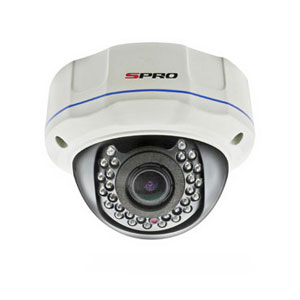How does CCTV work?
CCTV relies on strategic placement of cameras, and observation of the camera’s input on monitors somewhere. Because the cameras communicate with monitors and/or video recorders across private coaxial cable runs or wireless communication links, they gain the designation “closed-circuit” to indicate that access to their content is limited by design only to those able to see it.
CCTV use cases
Older CCTV systems used small, low-resolution black and white monitors with no interactive capabilities. Modern CCTV displays can be color, high-resolution displays and can include the ability to zoom in on an image or track something (or someone) among their features. Talk CCTV allows an overseer to speak to people within range of the camera’s associated speakers.
CCTV is commonly used for a variety of purposes, including:
- Maintaining perimeter security in medium- to high-secure areas and installations.
- Observing behavior of incarcerated inmates and potentially dangerous patients in medical facilities.
- Traffic monitoring.
- Overseeing locations that would be hazardous to a human, for example, highly radioactive or toxic industrial environments.
- Building and grounds security.
- Obtaining a visual record of activities in situations where it is necessary to maintain proper security or access controls (for example, in a diamond cutting or sorting operation; in banks, casinos, or airports).
CCTV is finding increasing use in law-enforcement, for everything from traffic observation (and automated ticketing) to observation of high-crime areas or neighborhoods. Such use of CCTV technology has fueled privacy concerns in many parts of the world, particularly in those areas in the UK and Europe where it has become a routine part of police procedure.
Different Types of CCTV
Dark Fighter Technology Cameras
These cameras can pick up coloured images in very low-light conditions. Dark fighter technology can be used in the day and night and offer optimal performance thanks to its wide range of capabilities. They are equipped with ½” CMOS progressive scan sensors which allows the device to pick up high-quality images and doesn’t require an extra light source – which makes the perfect night time security surveillance camera.
Other benefits of dark fighter technology cameras include:
- Smart features: line crossing, audio and face detection
- Can be used for a multitude of purposes
- High definition
ANPR/LPR Cameras
ANPR and LPR cameras are used to read and store data on registration plates. They offer a simple and efficient solution to many organisations including tolling, hotel overstay management and the obvious: car parking. ANRP stands for Automatic Number Plate Recognition (LPR cameras stands for License plate cameras) and these devices help to obtain copious information in a high traffic area to keep any premises secure.
Other benefits of ANPR/LPR cameras include:
- Smart features: information storage
- Can identify cars that have been banned from a premises
- Allows a business to run smoothly
Internal and External Dome Camera
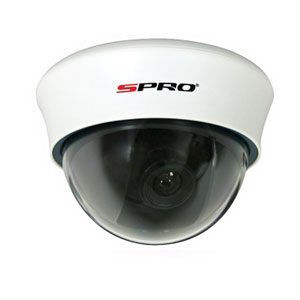
The dome camera is one most commonly used for indoor and outdoor security and surveillance. The shape of the camera makes it difficult for onlookers to tell which way the camera is facing, which is a strong piece of design, deterring criminals by creating an air of uncertainty. Other benefits of this type of camera include:
Other benefits of internal and external dome cameras include:
- Ease of installation
- Vandal-resistant features
- IR night vision
Bullet Camera
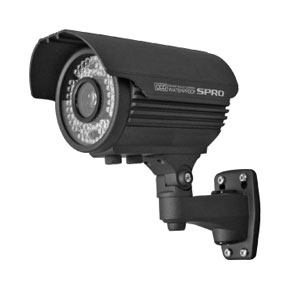
Bullet cameras are long and cylindrical in shape and are ideal for outdoor use. Their strengths lie specifically in applications which require long distance viewing. Installed within protective casings, the cameras are shielded against dust, dirt and other natural elements. The cameras can easily be mounted with a mounting bracket, and come fitted with either fixed or varifocal lenses depending on the requirements of its intended application.
Other benefits of bullet cameras include:
- IR night vision
- Compact size aids installation
- High-quality image resolution
C-mount Camera
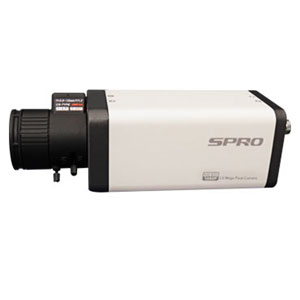
Coming with detachable lenses, C-mount cameras allow for simple lens changes to fit different applications. C-mount cameras can cover distances beyond 40 ft thanks to the possibility to use special lenses with these cameras, whereas standard CCTV lenses can only cover distances of 35-40 ft.
Other benefits of C-mount cameras include:
- Can support changes in technology
- Effective for indoor use
- Bulky size makes them noticeable (which acts as a deterrent)
Day/Night Camera
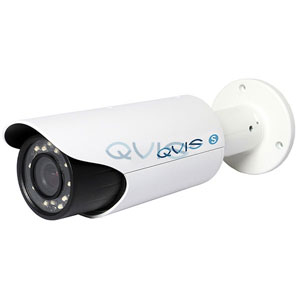
Capable of operating in both normal and poorly lit environments, these cameras benefit from not requiring inbuilt infrared illuminators as they can capture clear video images in the dark thanks to their extra sensitive imaging chips. For this reason, these cameras are ideal for outdoor surveillance applications in which IR cameras are unable to function optimally.
Other benefits of day/night cameras include:
- Record in both colour and black & white.
- Wide variety of sizes available
- Infrared capability
PTZ Pan Tilt & Zoom Camera
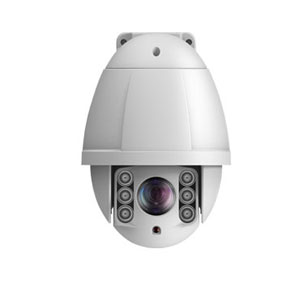
PTZ – Pan/tilt/zoom – cameras allow the camera to be moved left or right (panning), up and down (tilting) and even allow the lens to be zoomed closer or farther. These cameras are used in situations where a live guard or surveillance specialist is there operating the security systems.
Other benefits of PTZ cameras include:
- 200m IR night vision
- X36 optical zoom
- High-quality image resolution
Discreet CCTV
These types of cameras allow for discreet placement which means you can capture good footage of theft and criminal damage. Discreet CCTV cameras beneficial because criminals will be less likely to spot them and therefore, they are less likely to be damaged in the process.
Other benefits of discreet CCTV cameras include:
- Can be propped up or mounted
- Can be disguised in various objects
- Effective for indoor use
Thermal Image Cameras/Infrared Cameras
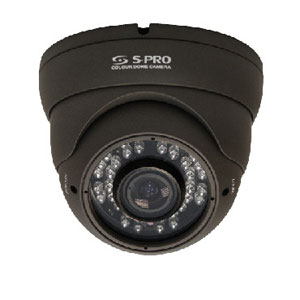
One of the best 24 hour surveillance cameras around providing airports, seaports, boards and many other critical infrastructures with quality images, no matter what time of day it is. Infrared cameras have small LEDs surrounding the lens to help pick up moving figures in pitch black. Thermal image cameras can see over long distances, up to 300 metres away!
Other benefits of infrared cameras include:
- Detect intruders up 250-300 metres away
- Good in low-light
- Thermal radiation passes through visual barriers
Varifocal Cameras
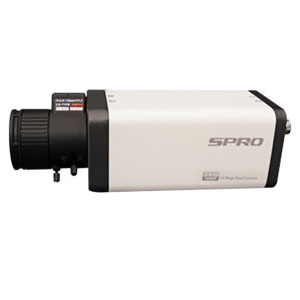
With the ability to zoom in and out without forfeiting its focus. Varifocal cameras allow you to adjust the focal length, the angle and increase or decrease the zoom – ideal for obtaining footage in a square room where you would normally experience a ‘dead zone’ with any alternative, fixed lense camera.
Other benefits of varifocal cameras include:
- Can capture those ‘dead zones’ that other cameras can’t
- Offer exceptional focus
- Work well up close and at long distances
Network Cameras![HD CCTV Cameras - Caught on Camera]()
These cameras share the images across the internet, so CCTV footage can be easily accessed. Network cameras are ideal for both domestic and commercial purposes because you can see what’s going on whilst away from the property.
Other benefits of network cameras include:
- Data can be easily accessed
- Ideal for homes and companies
- Less cabling and less maintenance
High Definition Cameras
High definition cameras have such a high resolution that they’re mainly used in high risk establishments such as banks and casinos. This is to capture a good image of anyone who enters and exits to maintain high security and maximum safety. These cameras are great for spotting misconduct and allows the user to zoom in for extra clarity, should the footage need to be used in court.
Other benefits of high definition cameras include:
- Clear, detailed pictures
- Offer maximum safety for high risk establishments
- Can zoom in without losing focus




